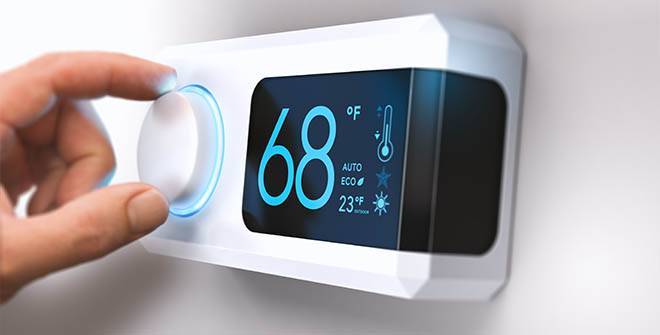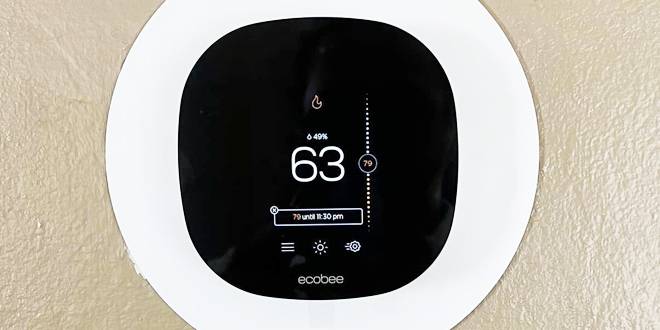
When the summer heat strikes, the last thing you want is for your air conditioner to malfunction. At the heart of your AC system is the thermostat, which plays a crucial role in maintaining the perfect indoor climate. Unfortunately, thermostat issues can lead to discomfort and inefficiency. In this blog, we’ll explore common AC thermostat problems, provide solutions, and help you understand when it’s time to seek professional assistance.
Key Points Covered:
- Common AC thermostat problems and how they affect your system
- Solutions to resolve thermostat issues effectively
- The importance of regular AC and thermostat maintenance
- Benefits of upgrading to a modern thermostat
- Signs that indicate it’s time to call a professional
Glossary of Terms
- Thermostat: A device that regulates the temperature of a system by switching heating or cooling devices on or off.
- Calibration: The process of adjusting the accuracy of a device to ensure precise operation.
- Zoned System: A heating or cooling system that divides a home into different areas for independent temperature control.
- Smart Thermostat: A programmable thermostat that can be controlled remotely via a smartphone or other device.
- HVAC: Heating, Ventilation, and Air Conditioning system.
- Short Cycling: A condition where an air conditioning unit turns on and off too frequently, preventing it from completing a full cooling cycle.
Common AC Thermostat Problems
Understanding common thermostat problems can help you identify issues early and take corrective action, ensuring your home remains comfortable and your system operates efficiently.
1. Incorrect Temperature Readings
If your thermostat is not accurately reflecting the room temperature, it can lead to discomfort and increased energy bills. Incorrect readings can occur due to several reasons:
- Location: If your thermostat is placed in direct sunlight, near windows, or close to heat-producing appliances, it can misread the room’s temperature. This leads to unnecessary cooling and increased energy costs.
- Dirt and Debris: Over time, dust and dirt can accumulate inside the thermostat, interfering with its sensors and affecting its ability to measure temperature accurately.
Solution:
- Relocate the Thermostat: Ensure your thermostat is positioned away from direct sunlight, windows, and heat sources. Ideally, it should be placed on an interior wall at eye level for the most accurate readings.
- Regular Cleaning: Gently clean the thermostat with a soft brush or cloth to remove any dust and debris. This simple maintenance task can significantly improve its performance.
2. Unresponsive Thermostat
An unresponsive thermostat can cause your AC to stop functioning altogether, leaving you in discomfort. This issue can result from:
- Dead Batteries: Sometimes, the simplest issues can cause the most frustration. Thermostats often rely on batteries for power, and dead batteries can render them unresponsive.
- Wiring Problems: Loose, corroded, or damaged wires can interrupt the thermostat’s communication with the AC unit, preventing it from controlling the system effectively.
Solution:
- Replace Batteries: Check the battery status regularly and replace them as needed to ensure your thermostat has power.
- Inspect Wiring: If you’re comfortable doing so, carefully inspect the wiring connections to ensure they are secure. If any wires appear damaged or corroded, it may be best to contact a professional for repairs.
3. Short Cycling
Short cycling is a common issue where your AC unit turns on and off frequently without reaching the desired temperature. This can lead to increased wear and tear on the system, reducing its lifespan and efficiency. Causes of short cycling include:
- Improper Calibration: If your thermostat is not correctly calibrated, it may send incorrect signals to the AC unit, causing it to turn on and off prematurely.
- Oversized AC Unit: A unit that is too large for your space can cool the area too quickly and shut off before completing a full cooling cycle.
Solution:
- Calibration: Consult a professional for thermostat calibration or consider upgrading to a smart thermostat for more precise control.
- System Evaluation: Have an HVAC professional evaluate your AC unit’s size to ensure it matches your home’s requirements. If the unit is oversized, they can recommend solutions to improve efficiency.
4. Old or Outdated Thermostat
Older thermostats may lack the features and capabilities to efficiently manage your home’s cooling needs. Upgrading can offer several advantages:
- Improved Energy Efficiency: Modern thermostats, especially smart thermostats, can optimize your energy usage by learning your schedule and preferences.
- Convenience: Smart thermostats allow for remote control and scheduling via smartphone apps, giving you the flexibility to adjust settings from anywhere.
Solution:
- Upgrade Your Thermostat: Consider upgrading to a programmable or smart thermostat for improved efficiency and convenience. For expert installation services, visit our AC installation page.

Importance of Regular Maintenance
Routine maintenance can prevent many common thermostat issues and ensure your AC system operates efficiently year-round. Regular maintenance can also extend the life of your HVAC system, saving you money on costly repairs and replacements.
- Comprehensive AC Maintenance: Our AC maintenance services in Vacaville are designed to keep your system running smoothly. Regular maintenance includes checking the thermostat, cleaning components, and ensuring all parts are functioning correctly.
- Maintenance Agreement: Consider enrolling in our maintenance agreement to receive regular check-ups, priority service, and potential discounts on repairs. This proactive approach can help you avoid unexpected breakdowns and maintain optimal comfort in your home.
Table: Common Thermostat Problems and Solutions
| Problem | Cause | Solution |
| Incorrect Temperature Reading | Location, Dirt | Relocate, Clean |
| Unresponsive Thermostat | Dead Batteries, Wiring | Replace Batteries, Check Wiring |
| Short Cycling | Improper Calibration, Size | Calibrate, Evaluate Size |
| Old Thermostat | Outdated Technology | Upgrade to Smart or Programmable Thermostat |
Fun Facts About Thermostats
- First Programmable Thermostat: The first programmable thermostat was introduced in 1906 by Albert Butz, revolutionizing how we control indoor temperatures. This innovation laid the groundwork for modern thermostats that offer precise control over home environments.
- Smart Thermostat Adoption: In recent years, the adoption of smart thermostats has increased significantly due to their energy-saving capabilities and convenience. Homeowners are drawn to features such as remote control, learning algorithms, and energy usage reports.
- Energy Savings: Installing a programmable thermostat can reduce your energy bills by up to 10% annually, making it a smart investment for eco-conscious homeowners.
FAQ Section
1. How do I know if my thermostat is malfunctioning?
Look for signs such as incorrect temperature readings, unresponsive controls, or frequent cycling of your AC unit. Unusual noises or error messages on the thermostat display can also indicate issues.
2. Can I fix a thermostat issue myself?
Simple issues like changing batteries or cleaning can be done yourself. However, for wiring or calibration issues, it’s best to consult a professional to avoid causing further damage to your system.
3. How often should I replace my thermostat?
Thermostats typically last around 10 years, but upgrading sooner can offer improved energy efficiency and convenience. If your thermostat is older, consider upgrading to take advantage of new features.
4. What is a smart thermostat?
A smart thermostat allows remote control of your home’s temperature via smartphone apps and can learn your preferences to optimize energy use. Some models also integrate with smart home systems for enhanced functionality.
5. Is a thermostat upgrade worth it?
Yes, upgrading to a programmable or smart thermostat can lead to significant energy savings and added convenience. It allows you to customize your home’s climate control to suit your lifestyle and reduce energy waste.
6. What should I do if my thermostat is displaying an error code?
Refer to your thermostat’s manual for troubleshooting steps. If the issue persists, contact a professional to diagnose and resolve the problem.
7. Can a thermostat affect my home’s air quality?
While thermostats primarily control temperature, maintaining proper humidity levels through your HVAC system can improve air quality. A thermostat with humidity control can help maintain a healthy indoor environment.
8. Why is my AC running constantly without shutting off?
This could indicate a thermostat issue or an oversized AC unit. Check your thermostat settings and consult a professional for evaluation and potential solutions.
9. How can I improve my thermostat’s accuracy?
Ensure proper placement away from heat sources and schedule regular maintenance to keep it functioning accurately. Calibration and regular cleaning can also help maintain its performance.
10. What are the benefits of a maintenance agreement?
A maintenance agreement ensures regular check-ups, priority service, and potential discounts on repairs, keeping your HVAC system in top shape and extending its lifespan.

Partner with All Weather Heating & Air Conditioning for Optimal Comfort
Ensuring your thermostat and AC system are functioning correctly is crucial for maintaining comfort in your home. At All Weather Heating & Air Conditioning, we’re dedicated to providing top-notch services in Vacaville, including air conditioning repair, installation, and indoor air quality improvement. If you’re experiencing any issues or considering an upgrade, don’t hesitate to contact us today for expert assistance.

